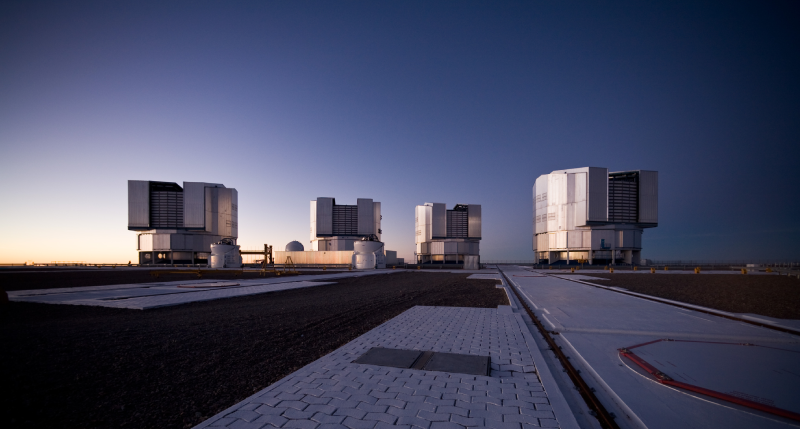The European Southern Observatory (ESO) and the National University Network of Chile (REUNA) announced the signing of a new agreement, thanks to which the European organization joins the Corporation as a Collaborating Partner. The purpose of the partnership is to strengthen the relationship between both institutions and foster new opportunities for linkages between the observatory and other scientific and academic entities in Chile and Latin America
(Source: REUNA) ESO has appointed Luis Chavarría, its representative in Chile, and Andrés Vinet, head of the IT Group, for the roles of Institutional and Technical Representative before REUNA, respectively. Regarding this new step, Luis Chavarría pointed out that “for us it is a step in the right direction. The work carried out by REUNA is an enormous contribution to the technical demands of astronomy now and in the future. This contribution materializes in a secure and fast infrastructure for the transmission of data from the observatories to the study centers and universities that collaborate with ESO throughout Chile”.
For her part, the executive director of REUNA, Paola Arellano, affirmed that this milestone reflects the strengthening of collaboration and joint work between both organizations. Likewise, she stressed that "thanks to its incorporation into REUNA, ESO will be one of the major users of the newly launched high-speed superhighway deployed within the framework of the BELLA program, which links Europe with Latin America, and, with this, they will benefit thousands of scientists around the world who require the data generated by the most important European astronomical observatory”.
REUNA and ESO are convinced of the importance of growing the cooperative relationship between the two institutions from the areas that each one develops to carry out common actions and strengthen each other in the pursuit of the achievement of their objectives.
The incorporation of ESO as a collaborating partner will allow the Observatory to access all the services that REUNA provides to its community and participate in the Corporation's Partner Assemblies. The strategic guidelines of the Chilean Academic Network are defined in this council.
A history of collaboration
ESO and REUNA established a Memorandum of Understanding in December 2010, within the framework of the joint execution of the EVALSO project (Enabling Virtual Access to Latin-america Southern Observatories), whose objective was the creation of a high-speed digital network to connect ESO's astronomical facilities in Paranal and Cerro Armazones with Europe. For this, a fiber optic infrastructure was deployed between both observatories and the REUNA Point of Presence (PoP) in Antofagasta, from where the data is sent through the REUNA digital platform to Santiago, connecting at this point to the networks international academic institutions, RedCLARA and Géant, to deliver the information to Europe, quickly and safely.
The construction and commissioning of this digital infrastructure, in the middle of the Chilean desert, translated into a competitive advantage for ESO's scientific work, since it made it possible for astronomers and astrophysicists to have faster access to the data generated by the set of the world's most powerful ground-based telescopes, allowing them to conduct cutting-edge science in the best conditions.
ESO is currently building a new telescope, the ELT (Extremely Large Telescope), which will work in the optical and near-infrared ranges and, at 39 meters in diameter, will become the largest optical reflecting telescope in the world when it is operational. . Its first technical light is scheduled for 2027 and the site chosen for its installation is Cerro Armazones, located in the Atacama desert about 130 kilometers south of Antofagasta and about 20 kilometers from the Paranal Observatory, also from ESO.
For more information on ESO, visit https://www.eso.org/public/chile/





